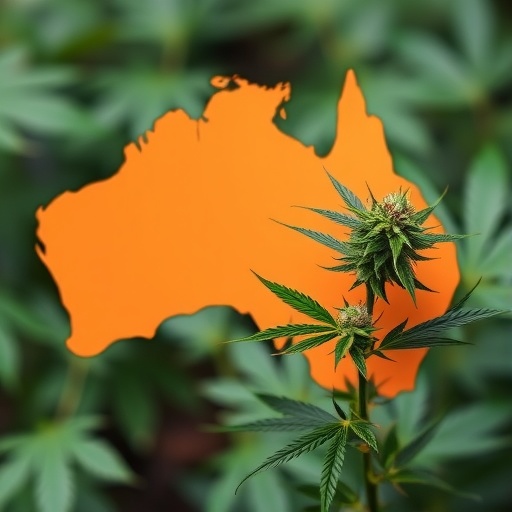A groundbreaking new study published in the esteemed journal Pharmacoeconomics and Policy has delved into the intricate preferences of Australians regarding the provision of medicinal cannabis (MC). Utilizing a sophisticated discrete choice experiment involving over 1,100 participants, this research offers an unprecedented glimpse into public opinion on several critical aspects of MC access, including formulation preferences, THC content, cost considerations, and the role of medical oversight. These findings carry profound implications for policymakers aiming to align regulatory frameworks with societal expectations while optimizing therapeutic outcomes.
At the core of the study lies a revelation that challenges existing paradigms: Australians predominantly perceive medicinal cannabis not merely as a final treatment option reserved for refractory cases but as a complementary therapeutic alternative viable at multiple stages of care. This marks a distinct departure from often restrictive policies that limit MC use to scenarios where conventional treatments have failed. According to Katrina Gething, the study’s lead author from Griffith University’s Centre for Applied Health Economics, the public’s openness to earlier integration of MC underscores a shift toward broader acceptance fueled by emerging clinical evidence.
The research methodology centered on a discrete choice experiment, a rigorous quantitative approach that simulates real-world decision-making by presenting respondents with hypothetical scenarios involving trade-offs among multiple attributes. This experimental design enabled the authors to dissect nuanced preferences across domains such as access timelines, product formulations, THC potency, associated costs, and necessity of medical supervision. The result was a rich data set uncovering both majority trends and significant heterogeneity within the population.
One of the standout findings pertains to product formulation preferences. Participants showed a clear inclination toward oral formulations—namely liquids and capsules—over inhalation methods involving raw cannabis flowers. This preference likely reflects concerns about ease of dosing, consistency, and potential harms associated with smoking or vaporizing plant material. Oral forms, with their standardized dosing and discreetness, appear to be viewed favorably for integrating MC into conventional therapeutic regimens.
Regarding THC content, a complex landscape emerged. While there was a general favoring of lower THC concentrations, which aligns with safety profiles and lower risk of psychoactive effects, respondents demonstrated flexibility in accepting higher THC levels in specific contexts such as terminal illnesses. This nuanced stance suggests that Australians recognize the need for tailored treatment approaches, balancing therapeutic efficacy with minimizing adverse effects, particularly for vulnerable patient groups.
Cost considerations surfaced as a pivotal theme in shaping attitudes toward MC. The study unequivocally found that affordability is a critical barrier to access, with many participants suggesting that government subsidies or financial assistance programs are essential to ease economic burdens. Notably, this concern was accentuated among older adults and female respondents, demographics that may face fixed incomes or increased healthcare costs. Such findings resonate with broader discussions about equity and accessibility in the expanding field of medicinal cannabis.
An intriguing dimension uncovered by the research relates to medical oversight. The majority of participants valued the involvement of healthcare professionals in prescribing MC, emphasizing safety and legitimacy. However, a substantial minority expressed neutrality on the necessity of medical supervision, highlighting emerging tensions between regulatory control and patient autonomy. These attitudes suggest that while professional guidance remains important, there is also appetite for flexible access models, potentially including pharmacist involvement or cannabis clinics.
Demographic factors played a significant role in shaping preferences. Beyond the aforementioned gender and age influences, the study revealed that older individuals and women are more likely to endorse structured access pathways and financial support mechanisms. This demographic stratification offers valuable insight for tailored public health messaging and policy development aimed at specific subpopulations with distinct needs and perspectives.
The implications of this comprehensive study extend well beyond Australia, where medicinal cannabis legislation varies significantly across states and territories. The authors strongly advocate for regulatory adjustments that reflect public preferences—in particular, broadening access criteria to allow MC prescription at earlier treatment stages, endorsing preferred administration routes, and implementing subsidy schemes to reduce cost barriers. Such policy reforms could facilitate greater patient engagement and optimize therapeutic outcomes in alignment with societal values.
Clinically, the findings demand renewed attention to how medicinal cannabis is integrated into treatment algorithms. The explicit preference for oral formulations and lower THC content calls for pharmaceutical innovation to develop standardized, evidence-based products that meet both efficacy and safety benchmarks. Concurrently, recognition of flexibility for higher THC levels in terminal cases underscores the importance of personalized medicine approaches.
From an economic standpoint, the identified emphasis on affordability highlights an urgent need for health economists, policymakers, and insurance providers to devise sustainable subsidy or reimbursement models. These would help mitigate disparities and ensure that cost does not become a prohibitive factor limiting patient access to potentially beneficial therapies.
In conclusion, this study by Gething and colleagues represents a landmark in understanding public attitudes toward medicinal cannabis in Australia. Its rigorous methodological approach and extensive sample size lend weight to its recommendations, which advocate for a more inclusive, patient-centered regulatory environment. As medicinal cannabis continues to gain traction globally, such evidence-based insights are indispensable for harmonizing policy with public sentiment and advancing the broader integration of MC into modern healthcare.
Subject of Research: Not applicable
Article Title: Not provided
News Publication Date: Not provided
Web References: http://dx.doi.org/10.1016/j.pharp.2025.06.002
References: Not provided
Image Credits: Not provided
Keywords: Health care, Public health




